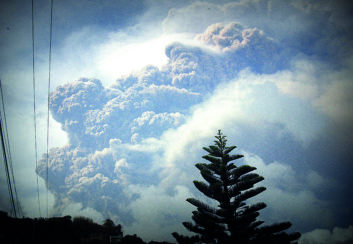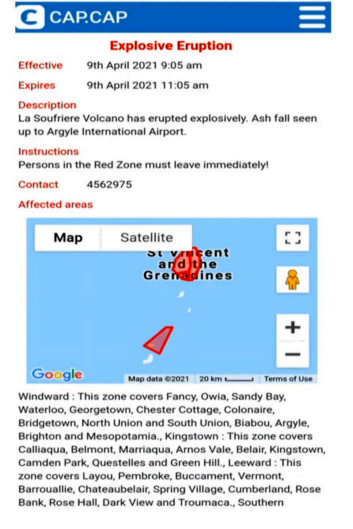
A global public awareness campaign hopes to convince the world’s nations to implement the Common Alerting Protocol.
Already in use in most of the developed world, CAP is an international standard for alerting systems that ensures the delivery of accurate, detailed and consistent alerts across all media in emergency situations.
As outlined in an online document “Call to Action on Emergency Alerting,” the campaign’s goal is “to ensure that by 2025 all countries have the capability for effective, authoritative emergency alerting that leverages the CAP suitable for all media and all hazards.”
According to the U.S. Federal Emergency Management Agency, a single CAP emergency message “can trigger a variety of public warning systems, increasing the likelihood that people receive the alert by one or more communication pathways.”
Heavy hitters
Support for this push is being provided by some big names in the international community. Endorsements have come from the likes of the International Federation of Red Cross and Red Crescent Societies, the International Telecommunication Union, the U.N. Office for Disaster Risk Reduction and Google.
AccuWeather and the World Meteorological Organization are onboard, as are the Asia-Pacific Broadcasting Union and the World Broadcasting Unions.
[Related: Campaign Aims for Global Use of CAP]
“Broadcasters play an essential role in communicating the key facts of an emergency, mindful that everyone in harm’s way must understand what is happening and what actions to take,” said Michael McEwen, head of the WBU Secretariat.
“This is why broadcasters embrace the CAP standard. … CAP makes public alerting faster, easier, less error-prone and more understandable. CAP helps a broadcaster be certain that an alert is authentic and authoritative, and to cross-check alerts from diverse sources. CAP alerts can also be compiled on a map to show how different aspects of the emergency are evolving.”
Proven in action
The effectiveness of CAP system was demonstrated in April 2021 when the La Soufrière volcano erupted explosively on the Caribbean island of St. Vincent. Thanks to widespread and timely CAP alerts across all media, residents in the “red zone” were told to evacuate to safer areas.

The result: According to the Associated Press, “There were no immediate reports of casualties or injuries.”
Dionne John, general manager of National Broadcasting Corp. SVG, said, “The CAP alert system was very effective during and after the eruptions. It proved to be particularly useful in alerting persons who were heading back to the red zone, whether to clean their homes or otherwise, whether it was safe to do so because of lahars and other elements. The media in turn was able to disseminate this information in a timely manner. I am positive that this may have contributed significantly to no lives being lost.”
CAP also helps keep residents informed of emergency events such as forest fires, flooding and severe storms in Canada’s remote and rugged Far North.
“Standardized delivery of unattended alerts makes communities safer while making radio more relevant as a reliable last-mile delivery mechanism, especially when there are breakdowns with online media and smart phone outages,” said “Radio Rob” Hopkins, a radio engineer in Canada’s Yukon territory.
His company, OpenBroadcaster, manufactures open-source CAP broadcast appliances for the Indigenous community radio sector. “Although most agencies don’t know, authorized issuers of emergency messages have the ability to notify residents in Indigenous dialects,” Hopkins said.
Filling the gaps
For people in the developed world, widespread adoption of CAP is a fact of life. In the United States, for example, the federal CAP system “is an aggregation of more than 1,600 city, county and state level feeds across the country,” said Eliot Christian, CEO of Alert-Hub.org CIC, an NGO committed to taking CAP global.

In fact, “Seventy percent of the world’s population lives in a country that already has a national-level CAP system. Another 15%, based on population, live in countries that are actively working on deploying CAP right now.”
It is the remaining 15% — in some of the world’s poorest countries — who lack access to CAP systems. Those are the governments the 2025 CAP awareness campaign is trying to sway. “These are the countries that are most affected by disasters because they don’t have a lot of built-in resilience,” Christian told Radio World. “For instance, their people could lose their entire livelihoods in a single hurricane.
“So yes, it is the most vulnerable countries that are unfortunately the ones that have the least developed alerting systems,” he continued. “And yet it’s so easy to create a CAP alerting system, which is why the agencies supporting this campaign agreed that it was time to issue a Call to Action and to set a deadline, to raise awareness and try to cover that remaining 15%.”
To learn more about CAP and how to deploy it in your region, visit alert-hub.org.
Comment on this or any article. Email [email protected].





